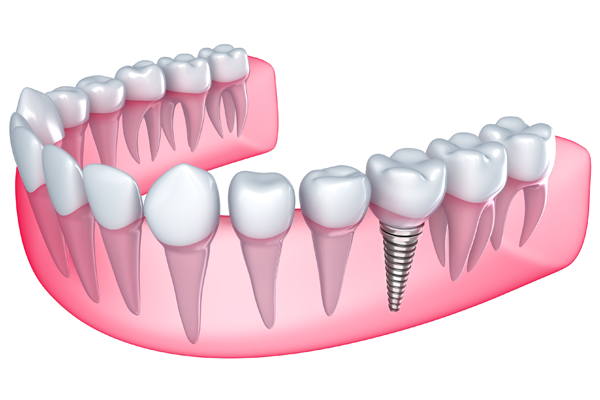Understanding the Connection Between Dental Implants and Bone Loss

Strong 8k brings an ultra-HD IPTV experience to your living room and your pocket.
Dental implants are one of the most popular and effective solutions for replacing missing teeth. They offer a permanent, natural-looking result that restores both function and appearance. However, the process of getting Dental Implants Dubai involves more than just placing an artificial tooth. One of the key factors in the success of dental implants is the relationship between implants and bone health, particularly how bone loss can impact the outcome of the procedure. In this article, we will explore the connection between dental implants and bone loss, why it matters, and how it can be managed.
What Is Bone Loss and Why Does It Occur?
Bone loss in the jaw is a natural process that occurs when a tooth is lost or removed. The jawbone relies on the stimulation provided by the tooth roots to maintain its density and strength. When a tooth is lost, the bone in the area no longer receives the pressure it once did, which leads to resorption — the gradual weakening and shrinking of the bone. Over time, this bone loss can cause changes in the shape of the jaw, potentially making it difficult to place dental implants or affecting their long-term stability.
Several factors contribute to bone loss:
Tooth Loss: As mentioned, losing a tooth is the most common cause of bone loss. Without the tooth root to stimulate the bone, the body naturally begins to reabsorb the bone tissue.
Periodontal Disease: Gum disease can also lead to bone loss. The infection from periodontal disease can damage the tissues and bone supporting the teeth, leading to further resorption.
Age: As people age, the bone density in the jaw naturally decreases. This is especially common in older adults and can complicate implant placement.
Inadequate Oral Hygiene: Poor oral hygiene can lead to gum disease and the subsequent loss of bone. Maintaining a clean, healthy mouth is essential for preventing bone loss.
Systemic Conditions: Certain health conditions, such as osteoporosis, diabetes, and hormonal imbalances, can contribute to bone loss and affect the success of dental implants.
How Bone Loss Affects Dental Implant Placement:
Dental implants rely on the presence of sufficient, healthy bone to be placed securely in the jaw. When there is significant bone loss, there may not be enough bone structure to support an implant, which can lead to implant failure. If the bone is too weak or too thin, the implant may not integrate properly, leading to issues like loosening or even rejection.
The key to successful dental implant placement is osseointegration, which is the process by which the implant fuses with the surrounding bone tissue. This requires a stable and healthy bone environment to create a strong bond. When there is insufficient bone density or volume, the chances of osseointegration failing are higher, and the success of the implant can be compromised.
Solutions to Bone Loss Before Implant Placement:
Fortunately, there are various solutions available to address bone loss before placing dental implants. These procedures aim to rebuild the bone structure, making it possible to place implants safely and effectively.
1. Bone Grafting:
Bone grafting is one of the most common techniques used to treat bone loss. In this procedure, bone material is added to the affected area to encourage new bone growth. The bone graft can be derived from the patient’s own body (autograft), a donor (allograft), or synthetic materials (xenograft). Over time, the grafted material fuses with the existing bone, creating a stronger and more stable foundation for the implant.
Bone grafting can be done in different areas of the jaw, depending on where the bone loss has occurred. The procedure often requires a healing period of several months before implants can be placed, but it significantly improves the chances of implant success.
2. Sinus Lift Surgery:
In cases where bone loss occurs in the upper jaw, particularly in the area of the molars, a sinus lift procedure may be necessary. This surgery involves lifting the sinus membrane and adding bone graft material to the space between the jaw and the sinus cavity. This procedure can help rebuild bone volume and create the space needed for implant placement.
3. Ridge Expansion:
In cases where the width of the jaw has been reduced due to bone loss, ridge expansion may be used to widen the jawbone. This technique involves grafting bone to the sides of the ridge to increase its width and make room for the dental implant.
4. Implant-Supported Bone Regeneration:
This is a newer technique where dental implants themselves are used to stimulate bone growth. This procedure can be particularly useful when a limited amount of bone remains, as the implant is placed into the bone and acts as a foundation for bone regeneration.
The Importance of Early Intervention:
Addressing bone loss early is crucial for ensuring that dental implants are successful. The longer the tooth has been missing, the more likely it is that significant bone loss has occurred. In many cases, waiting too long to replace missing teeth can result in the need for more extensive bone grafting or other procedures.
By seeking treatment for bone loss sooner rather than later, patients can prevent further deterioration of the jaw and increase the chances of a successful implant procedure. Additionally, early intervention can help avoid complications such as facial sagging or bite problems, which may arise from prolonged bone loss.
Post-Implant Care to Prevent Further Bone Loss:
Even after dental implants are placed successfully, it is important to maintain good oral hygiene and care to prevent further bone loss around the implant. Regular check-ups with your dentist or oral surgeon will ensure that the implants remain stable and that the surrounding bone stays healthy.
Preventive measures to keep bone loss at bay include:
Good Oral Hygiene: Brushing and flossing regularly, as well as using mouthwash, can help keep the gums healthy and free from infection.
Routine Dental Visits: Regular dental check-ups are essential for monitoring the health of both the implants and surrounding bone.
Avoid Smoking: Smoking is a known risk factor for implant failure and bone loss. Avoiding tobacco products can improve the chances of long-term implant success.
Healthy Diet and Lifestyle: Proper nutrition, including a diet rich in calcium and vitamin D, is important for maintaining bone health.
Conclusion:
The connection between dental implants and bone loss is significant, and understanding it is key to ensuring the success of the implant procedure. Bone loss can compromise the stability and longevity of Dental Implants in Dubai, but with proper treatment and intervention, the challenges posed by bone loss can be overcome. Whether through bone grafting, sinus lift surgeries, or other techniques, patients can regain the bone structure necessary for a successful dental implant procedure. Early intervention and good post-implant care are also crucial in preventing further bone loss and maintaining the health and longevity of both implants and the surrounding bone.
Note: IndiBlogHub features both user-submitted and editorial content. We do not verify third-party contributions. Read our Disclaimer and Privacy Policyfor details.







